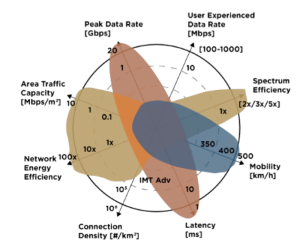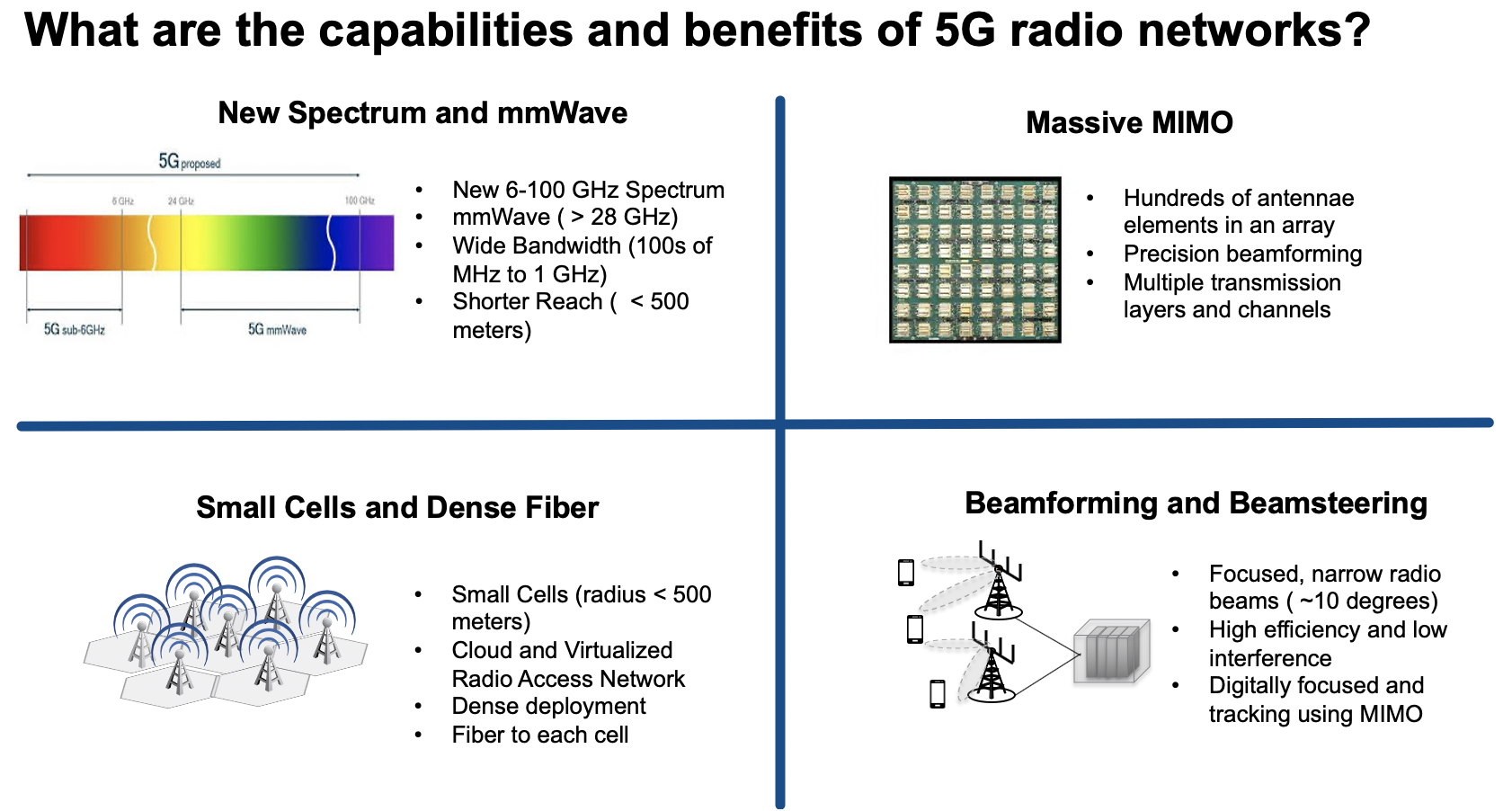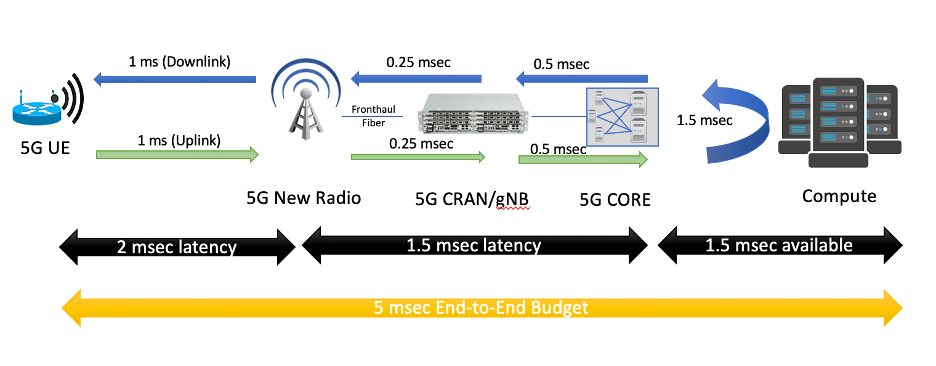...
5G will provide significantly higher throughput than existing 4G networks. Currently 4G LTE is limited to around 150 Mbps. LTE Advanced increases the data rate to 300 Mbps and LTE Advanced Pro to 600Mbps-1 Gbps. The 5G downlink speeds can be up to 20 Gbps. 5G can use multiple spectrum options, including low band (sub 1 GHz, mid-band 1-6 GHz and mmWave 28, 39 GHz). The mmWave spectrum has the largest available contiguous bandwidth capacity (~1000 MHz) and promises dramatic increases in user data rates. 5G enables advanced air interface formats and transmission scheduling procedures that decrease access latency in the Radio Access Network by a factor of 10 compared to 4G LTE.
Figure 1. 5G key performance goals.
5G New Radio (5GNR) improves the air interface capacity and the Radio Access Network (RAN) density by utilizing small cells, RAN functional split (separation between the RAN functions such as Distributed Unit and Centralized Unit, connected via Fronthaul or Midhaul depending on the split option), Massive Multiple Input Multiple Output (mMIMO) antenna arrays and Beamforming/Beamsteering (for advanced spatial multiplexing), as well as high capacity spectrum options.
Figure 2. 5G New Radio characteristics.
Among advanced properties of the 5G architecture, Network Slicing represents an attractive capability to enable the use of 5G network and services for a wide variety of use cases on the same infrastructure. Network Slicing (NS) refers to the ability to provision and connect functions within a common physical network to provide resources necessary for delivering service functionality under specific performance (e.g. latency, throughput, capacity, reliability) and functional (e.g. security, applications/services) constraints.
It is important to point out that the keyword “network” refers to the complete system that provides services and not specifically to the transport and networking functions that are part of this system. In the mobile context, the examples of networks are the Evolved Packet System (EPS) delivering 4G services and the 5G System (5GS) delivering 5G services. Both systems include the RAN (LTE, 5GNR), Packet Core (EPC, 5GC) and transport/networking functions that can be used to construct network slices. A variant of Network Slicing configuration is show in the figure below.
Figure 3. Example of Network Slicing configuration.
The Mobile Edge
The technological capabilities defined by the standards organizations (e.g. 3GPP, IETF) are the necessary conditions for the development of 5G. However, the standards and protocols are not sufficient on their own. The realization of the promises of 5G depends directly on the availability of the supporting physical infrastructure as well as the ability to instantiate services in the right places within the infrastructure.
...
Latency can be used as a very good example to illustrate this point. One of the most intriguing possibilities with 5G is the ability to deliver very low end to end latency. A common example is the 5ms round-trip device to application latency target. If we look closely at this latency budget, it is not hard to see that to achieve this goal a new physical aggregation infrastructure is needed. This is because the 5ms budget includes all radio network, transport and processing delays on the path between the application running on User Equipment (UE) and the application running on the compute/server side. Given that at least 2ms will be required for the “air interface”, the remaining 3ms is all that’s left for the transport and the application processing budget. The figure below illustrates the end-to-end latency budget in a 5G network.
Figure 12. Example latency budget with 5G and Edge Computing.
...


